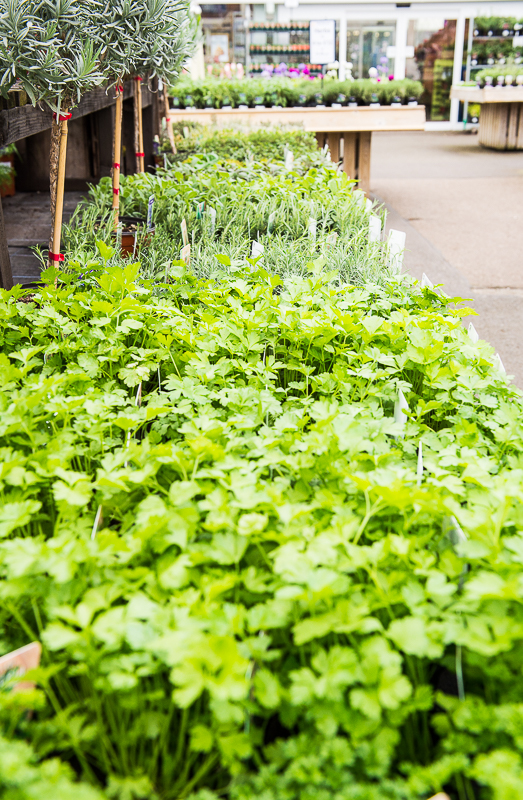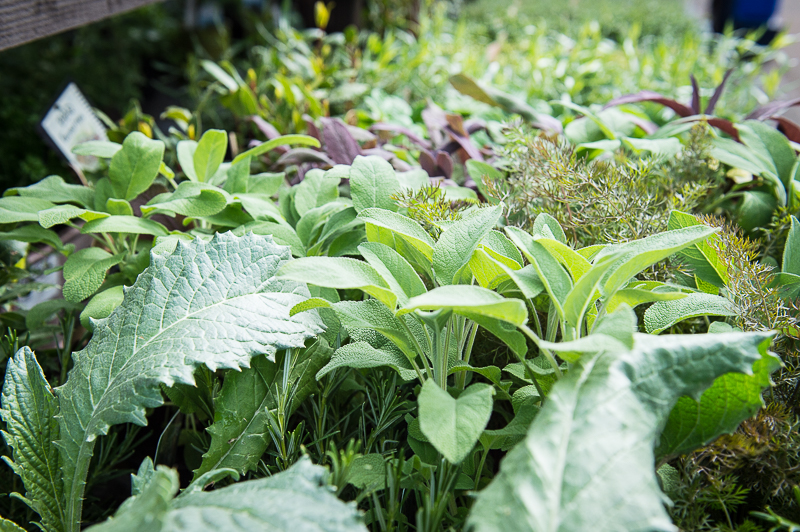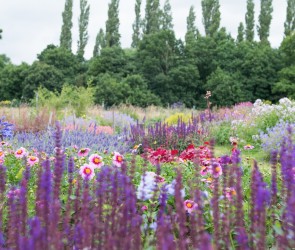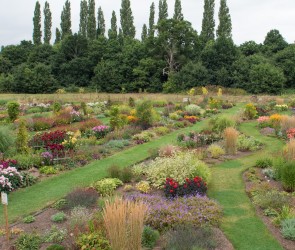- Home
- About
- Visiting Us
- AylettPlus
- Online Shop
- Our Range
- Plant Finder
- Seasons Café
- Events
- News
- Sustainability
- Contact Us
01727 822255
info@aylettnurseries.co.uk
Herbs
Fresh from the garden for flavour, aroma and well-being – nothing beats home-grown Herbs.
Herbs are plants with savory or aromatic properties that are used for flavoring food, in medicine, or as fragrances and have been cultivated and harvested by man for thousands of years. Not only do herbs taste and smell amazing, some also have attractive flowers, important for attracting pollinating insects.
Make space in your garden and choose a selection of herbs to suit your needs, if outside space is limited common culinary herbs can be grown in pots on a windowsills.
Our full range of herbs are available from mid-April, and we always have a wide range of suitable containers in stock.
Planting Tips
Herbs can be planted in tubs with other ornamental shrubs, but on the whole, it is best to keep them on their own, using John Innes No. 2 compost and ensuring adequate drainage. Invasive herbs such as Mint must be grown separately. The remainder can be grouped very pleasingly in large containers.
A selection of herbs can be grown in a small place by using a strawberry pot. Suitable plants include Bay (for the top only), Chives, Parsley, Rosemary, Sage and Thyme.
Types of Herbs
Thyme | Latin Name: Thymus vulgaris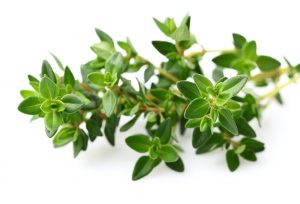
- An evergreen Herb with culinary, medical & ornamental purposes.
- Dense mats of small aromatic leaves, flower spikes in white, pink or purple.
- Useful for seasoning stocks, stews and soups.
- ‘Roman soldiers would bathe in Thyme before going into battle to give them courage’.
Tarragon | Latin Name: Artemisia dracunculus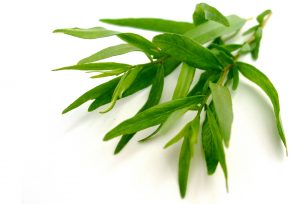
- A half hardy aromatic perennial with small green/white flowers.
- Ideal in pots or mixed borders Use sparingly to add delicious flavours to chicken, fish & omelettes.
- ‘Throughout the centuries Tarragon has been used to help cure various complaints such as flatulence, hiccups and toothaches’.
Sage | Latin Name: Salvia officinalis
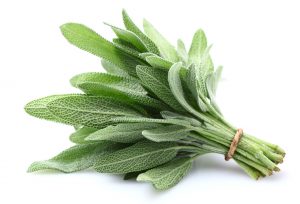
- A hardy perennial herb with distinctive aromatic foliage and pretty blue to purplish flowers which are very attractive to Bees.
- Leaves can be used fresh or dried for cooking – traditionally used in stuffing recipes or in pasta sauces.
- ‘Folklore suggests that Sage is good for the head and brain, quickening the senses and the memory.
Rosemary | Latin Name: Rosmarinus officinalis
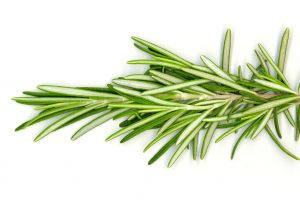
- An evergreen shrub for full sun and well-drained soil.
- Highly aromatic foliage with attractive clusters of blue, white or pink flowers in early summer.
- Leaves can be used fresh or dried for cooking – try marinating leaves in olive oil for a tasty dressing.
- ‘Legend has it that sleeping with Rosemary under your pillow wards off unpleasant spirits and nightmares!’
Parsley | Latin Name: Petroselinum crispum
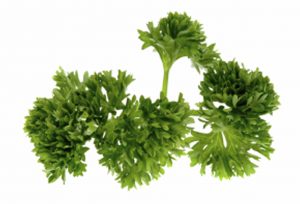
- Biennial Herb, best grown as an annual and in sun/part shade.
- Can be grown in pots & containers or used as edging in borders.
- Has a variety of culinary uses including pestos and garnishes, to ensure a continuous fresh supply pick regularly.
- ‘In Tudor times Parsley was thought to be a remedy for baldness!’
Mint | Latin Name: Mentha
- A hardy and easy-to-grow perennial Herb suitable for pots and containers.
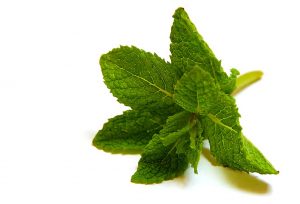
- Has a wide range of culinary uses – try infusing leaves for a refreshing tea!
- Attractive to Bees.
- The smell of Mint is said to ‘rejoyceth the heart of man’.
Marjoram | Latin Name: Oreganum/Oregano
- A perennial Herb with aromatic foliage and small clusters of flowers in shades of pink, purple, red or white.
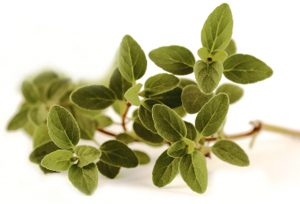
- Attracts Butterflies, Bees and other insects.
- Has a wide range of culinary uses.
- ‘In ancient Egypt Marjoram was used for healing and disinfecting’.
Fennel | Latin Name: Foeniculum vulgare
- Hardy perennial with fine aromatic foliage and umbels of small yellow flowers.
- An architectural plant suitable for a mixed a border.
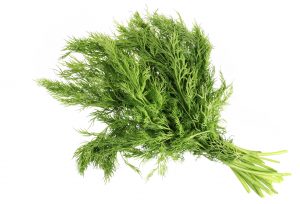
- The aniseed taste adds good flavour to fish and poultry dishes.
- ‘Fennel was once thrown at newlyweds to aid love and longevity’.
Coriander | Latin Name: Coriandrum sativum
- An annual Herb with aromatic foliage for a sunny sheltered area.
- Has a wide range of culinary uses and is often used in Asian cooking, including curries, Chinese and Thai meals.
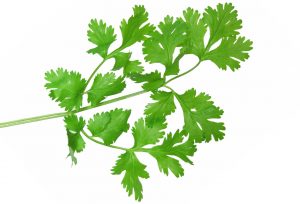
- Helps to repel Aphid and Carrot Fly when used for companion planting.
- ‘Coriander is believed by some to be an aphrodisiac!’.
Chives | Latin Name: Allium schoenoprasum
- A perennial Herb with aromatic grass-like foliage and attractive pink flowers.
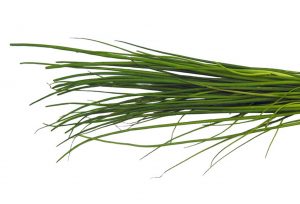
- Has a wide range of culinary uses.
- Attractive to Butterflies.
- ‘It is said that growing Chives in your garden will help to encourage fairies!’.
Bay | Latin Name: Laurus nobilis
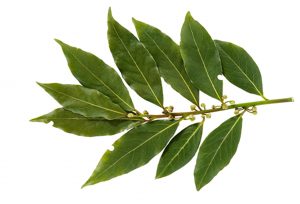
- An evergreen Herb with aromatic foliage for a sunny sheltered site.
- Dried leaves provide culinary use and are useful for bouquet-garni.
- Can be grown as standards and topiaries.
- ‘Bay was once seen as a symbol of wisdom and glory’.
Basil | Latin Name: Ocimum basilicum
- A tender annual Herb for a sunny sheltered area.
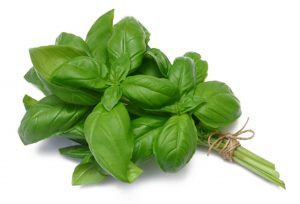
- The aromatic leaves are useful for cooking, particularly in Mediterranean style dishes.
- Helps to repel some garden pests when used for companion planting.
- ‘In some places Basil is considered to be sacred and a powerful protector’.
Dill | Latin Name: Anethum graveolens
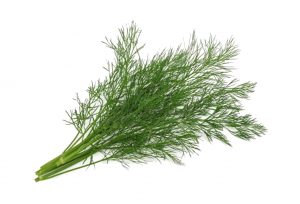
- Fresh and dried dill leaves, with their wonderfully aromatic smell, pair beautifully with seafood such as smoked salmon. The herb is also popular matched with potatoes and soups.
- A short lived but hardy annual belonging to the celery family.
- It has a strong, distinctive taste that is like a combination of fennel, anise and celery, with warm, slightly bitter undertones.
Be sure to visit the garden centre and make your selection from our superb Herb collection!
Brief History & Modern Usage
Many of the herbs popular today have their origins in the Mediterranean regions and were introduced by the Romans. The combined knowledge of these plants and those already known in the North formed the basis of herbalism – an important aspect of early and medieval living. Monasteries were the main centres of learning and the monks in their Herbariums and Physic Gardens did much to increase the knowledge of plant-derived remedies. During the 18th Century, the first plant drugs began to be synthesised chemically, giving rise to our present-day pharmaceutical industry.
By the 1500s, most people were growing herbs for medicinal, cooking and personal hygiene use. The growing of herbs in large houses gave rise to knot gardens or parterres. These were small decorative beds of herbs surrounded by low clipped hedges. Apart from medicinal, the main use of herbs at this time was to disguise the taste and smell of rotting meat, and for strewing around the house to guard against infestation and to mask smells. This practice also gave rise to the use of the various scents in toiletries and potpourri.
Care & Maintenance
- Culinary herbs have long been grown in pots on windowsills and all the more common ones will do well.
- Many are aromatic and some have attractive flowers so they need not be purely utilitarian. They will need to be watered regularly, but avoid overwatering.
- Most herbs need a sunny site to thrive and some herbs are annuals, which will need sowing each year, e.g. Basil, Borage and Summer Savoury.
- Parsley is a biennial and will need replacing every two years.
Our knowledgeable staff are ready to help and advise you on your herb selection, so please call us on 01727 822255 or email us on info@aylettnurseries.co.uk for further information or visit us in-store today.


